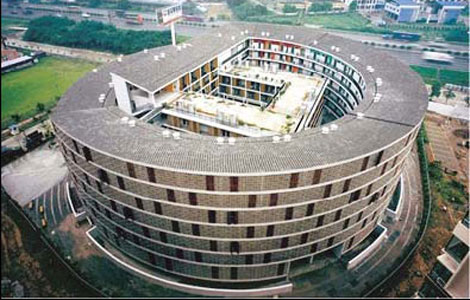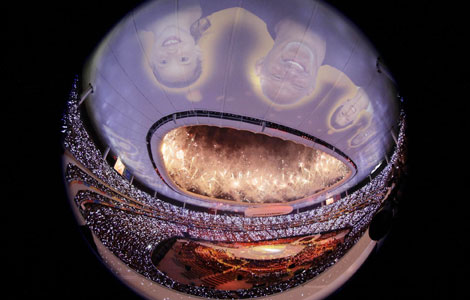Bad Boy Architects & China's New Face
Updated: 2011-10-16 07:44
By Liu Yujie (China Daily)
|
|||||||||||
|
 |
|
The iconic CCTV Tower in Beijing is the subject of much debate. Provided to China Daily |
In Beijing, the National Stadium, otherwise known as the Bird's Nest, was designed by Herzog & de Muron from Switzerland. The National Center for the Performing Arts was by French architect Paul Andreu and the landmark China Central Television Headquarters in the heart of the central business district is the work of Rem Koolhaas from the Netherlands, while the Beijing Capital International Airport was designed by Norman Foster from the United Kingdom.
Since the beginning of the millennium, the works of international architects have sprung up like mushrooms in China's cities. These urban gurus not only brought their cutting-edge designs here, but also brought the whole world's attention to what can be built in China. Constant global media coverage has portrayed China as an open stage for ambitious, innovative urban design, a reputation which initially pleased those who were commissioning the building, but later raised doubts and reflections of whether the country was being misused as a testing ground for maverick projects.
It is true that today's China has both money and mind for probably the largest urban construction movement in human history, a major motivation for first-class architects overseas.
Zaha Hadid, the world's foremost female architect, drives it home when she compares China to "a perfect blank canvas" for architects with unlimited creation.
Nevertheless, Peng Peikeng, a senior commentator at Tsinghua University, is angered by the fact that some well-known foreign architects have obviously taken advantage of China's eagerness to build dazzling modern cityscapes. He feels there has been too many architectural experiments here in recent years.
"The Pritzker prize, the Nobel prize in architecture, is awarded to honor those who build works demonstrating 'durability, utility, and beauty'. This is widely accepted as the yardsticks for good building design. Sadly, many of these foreign architects' works in China display none of these."
Peng supports his criticism by pointing out that many of these designs would never be accepted by the architects' home countries because they would have failed city planning concerns, stricter sustainable development demands and tighter budgets.
Hot Topics
Libya conflict, Gaddafi, Oil spill, Palace Museum scandal, Inflation, Japan's new PM, Trapped miners, Mooncake tax, Weekly photos, Hurricane Irene
Editor's Picks

|

|

|

|

|

|






